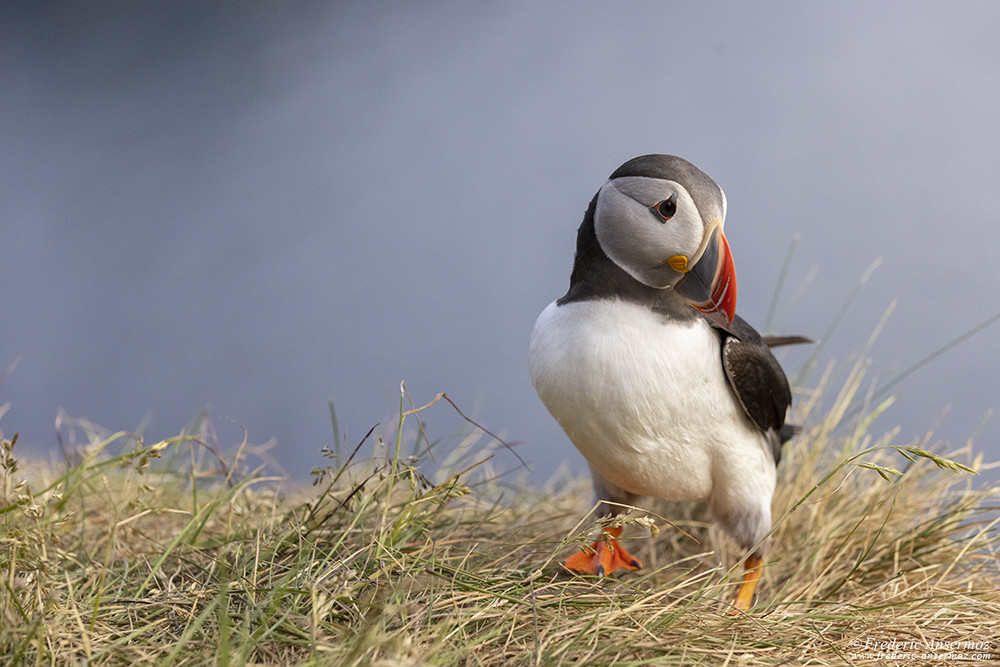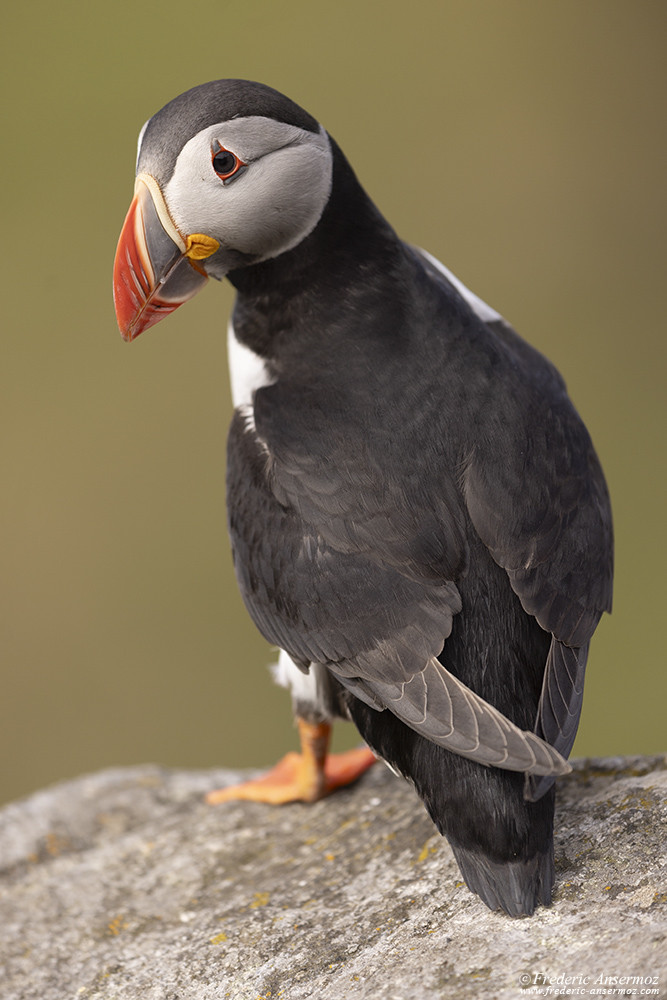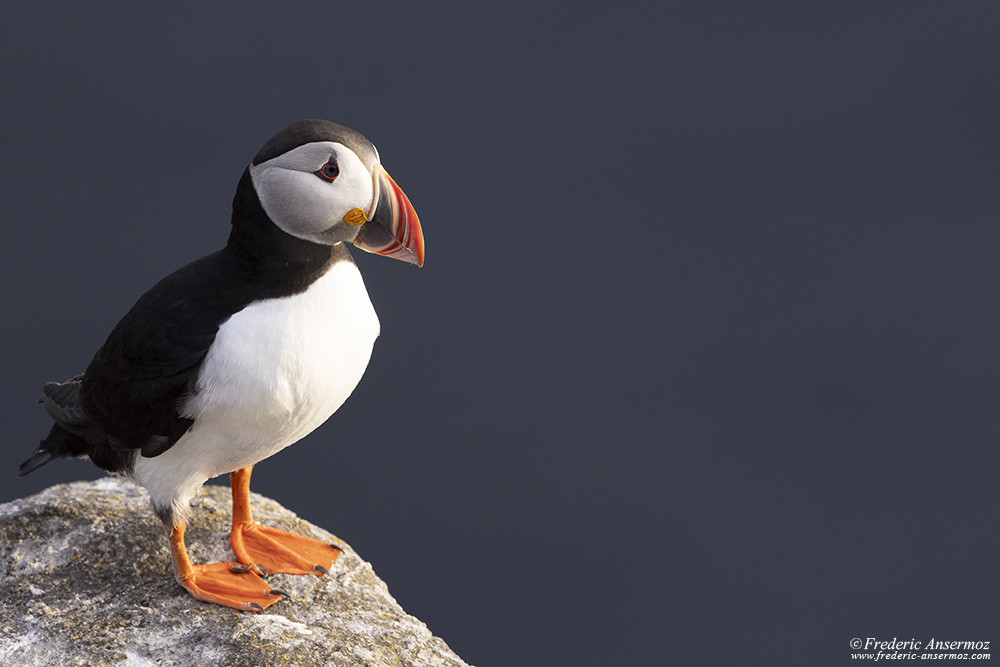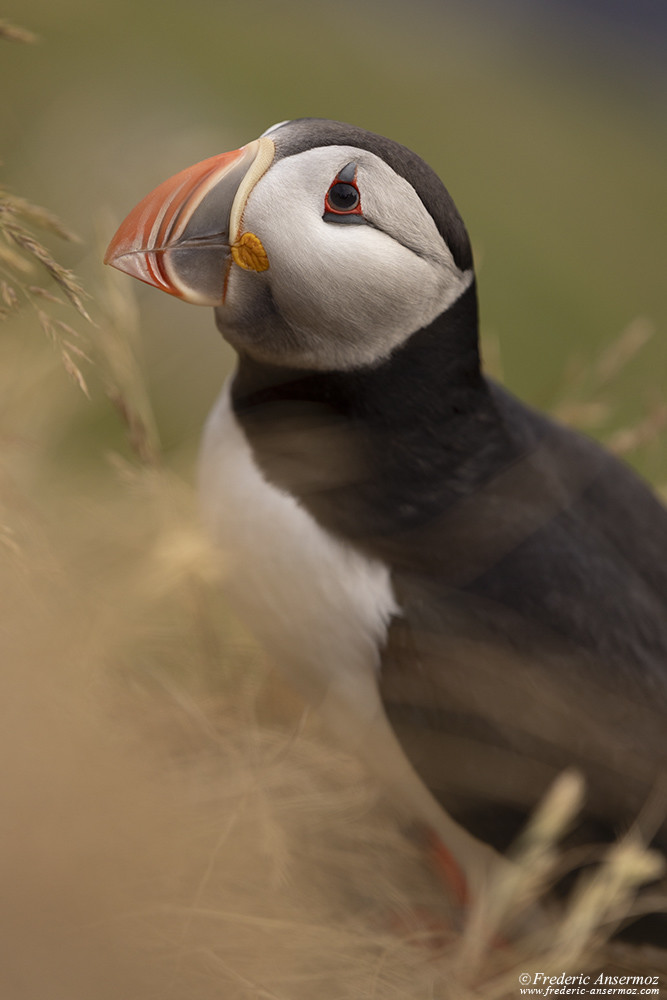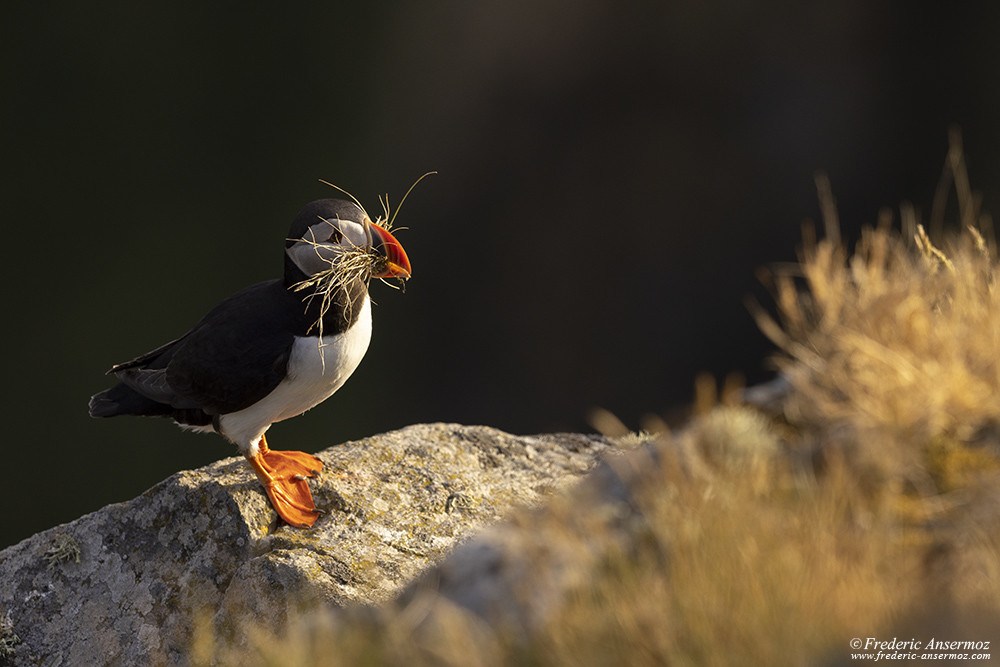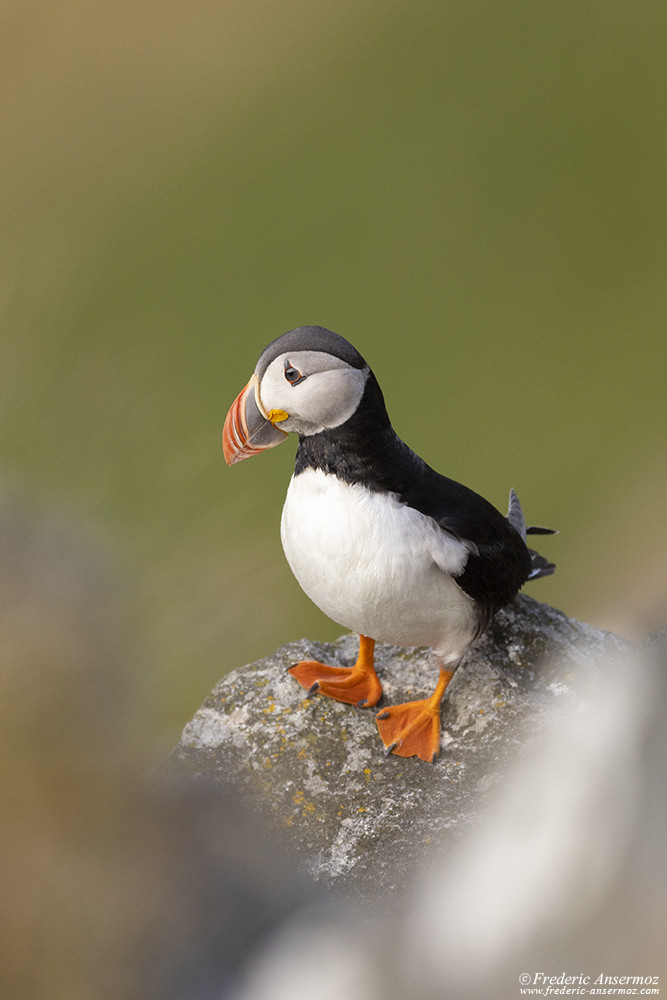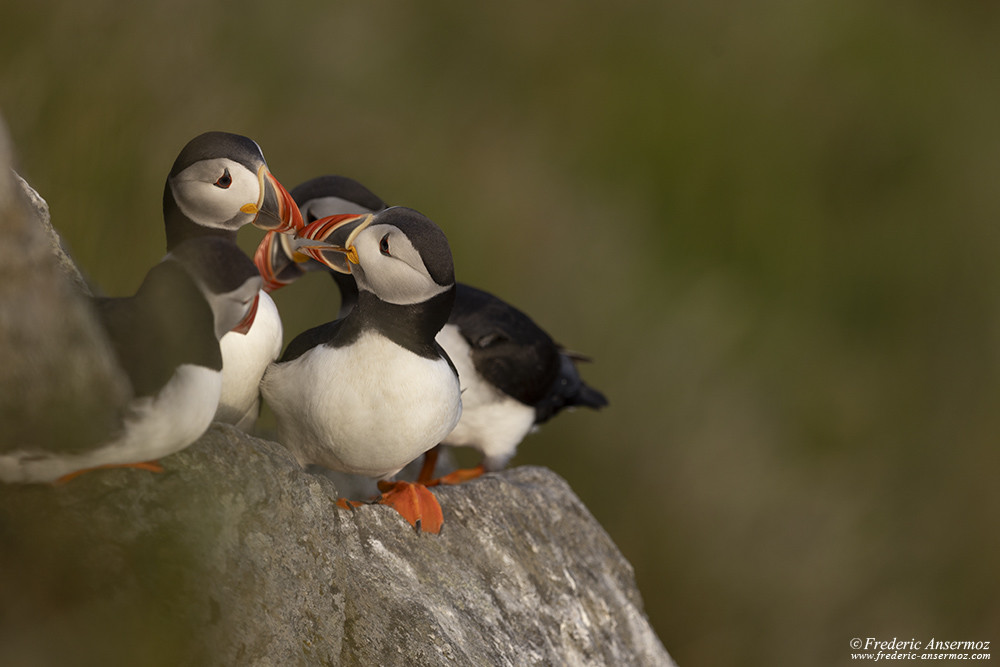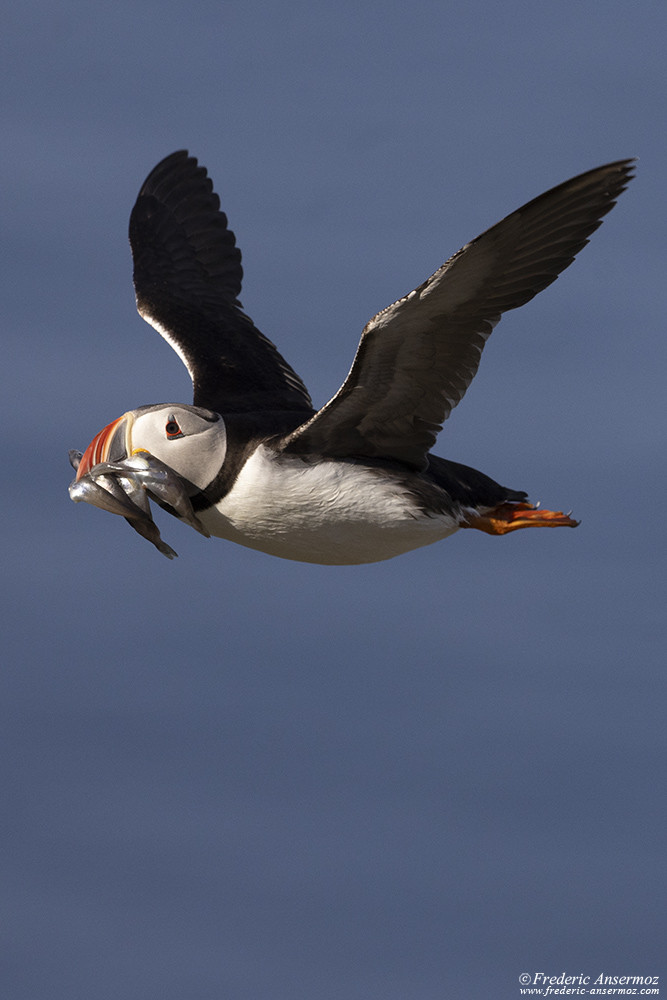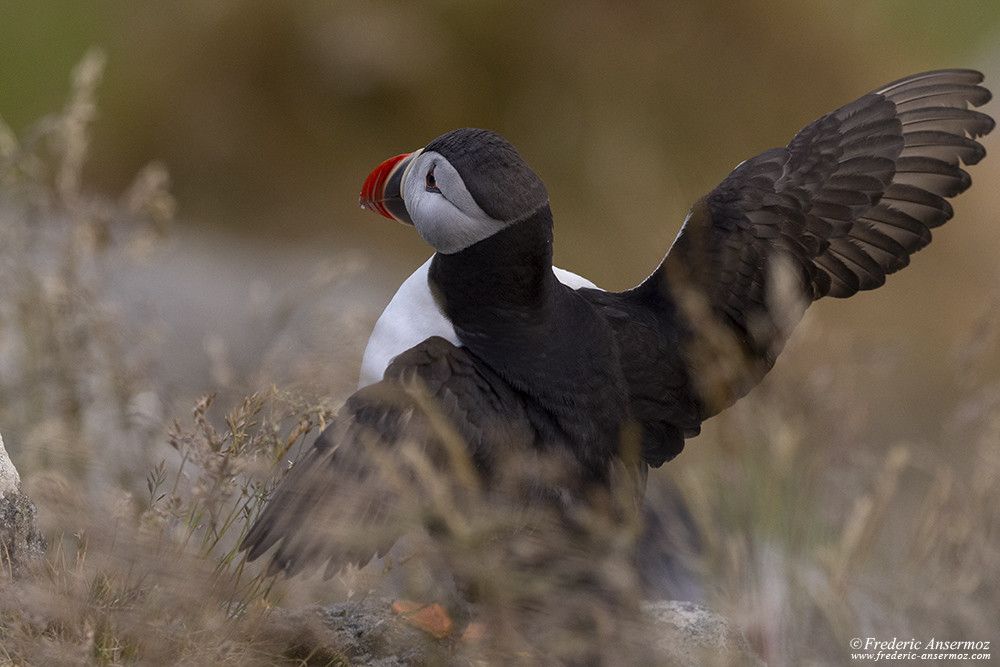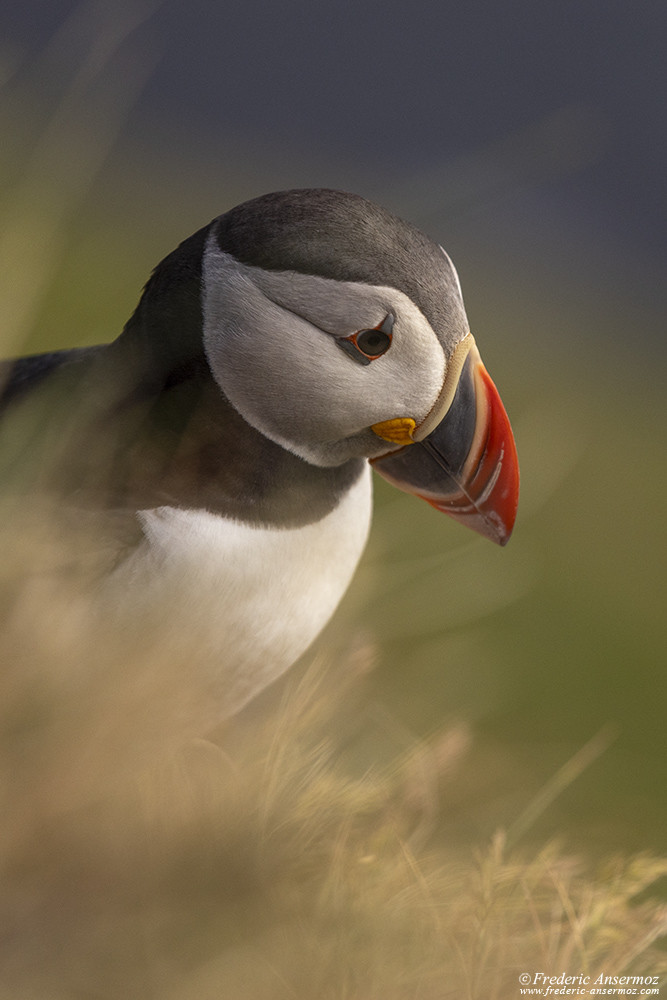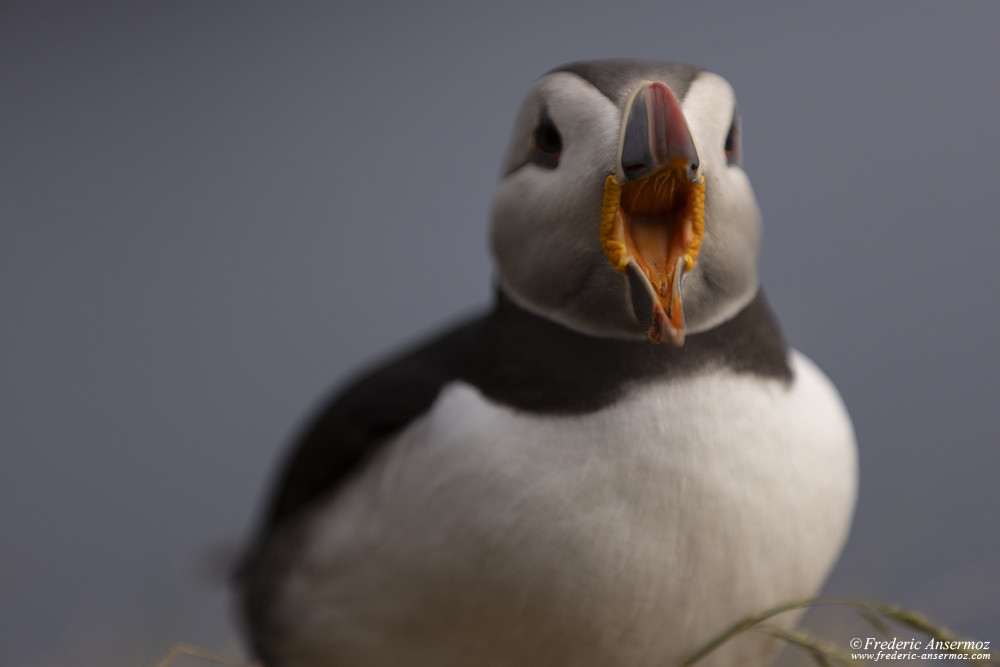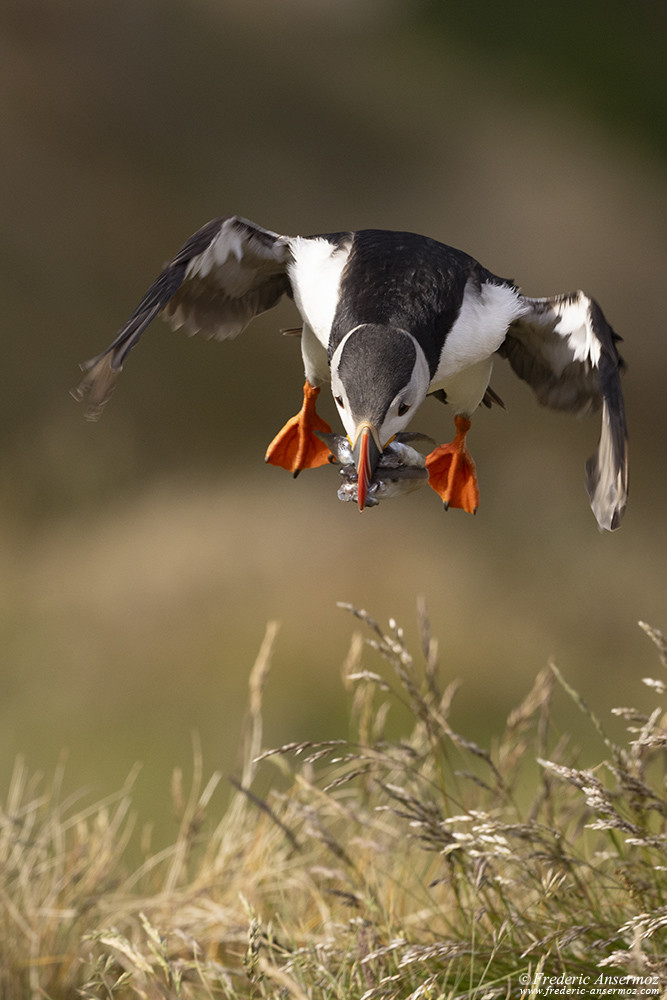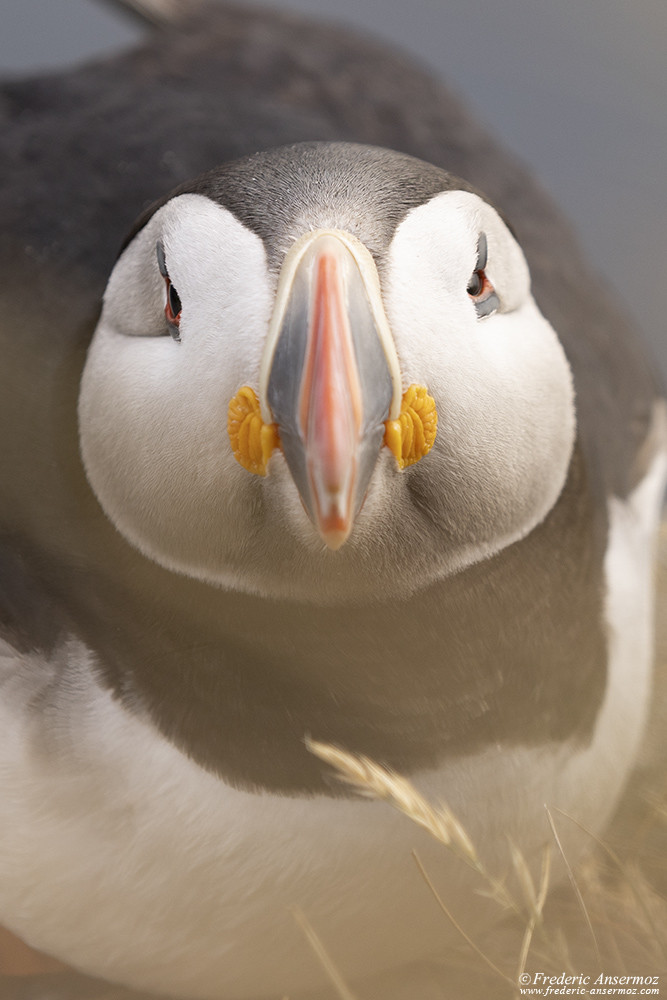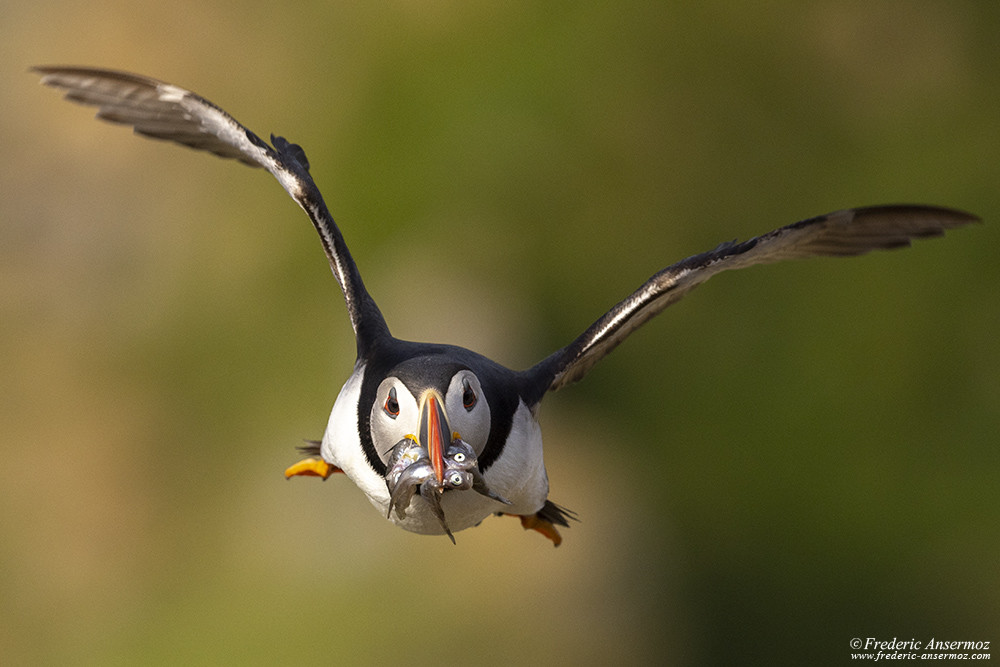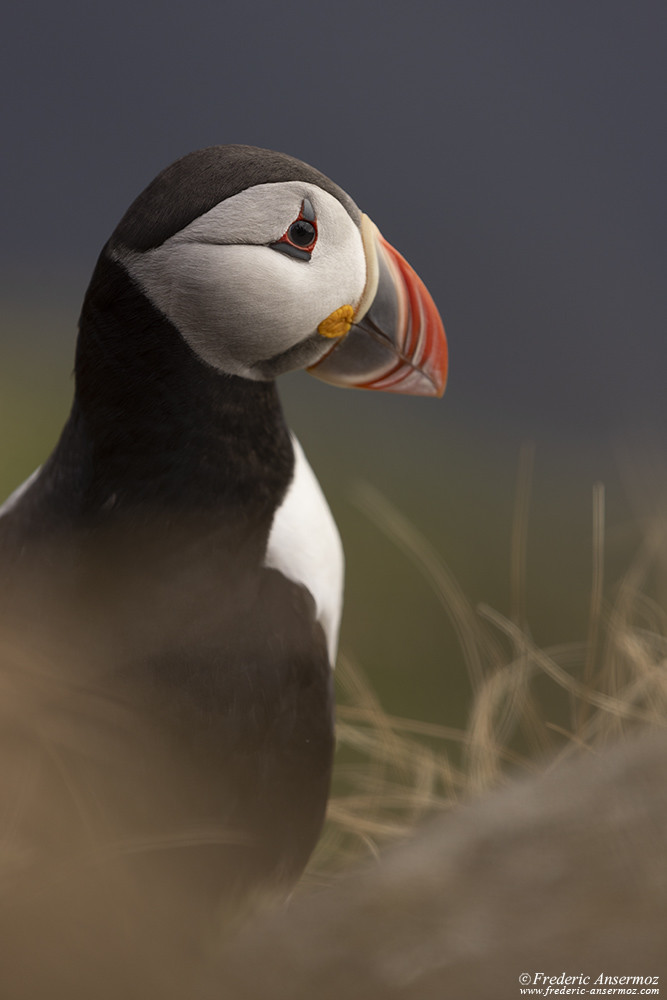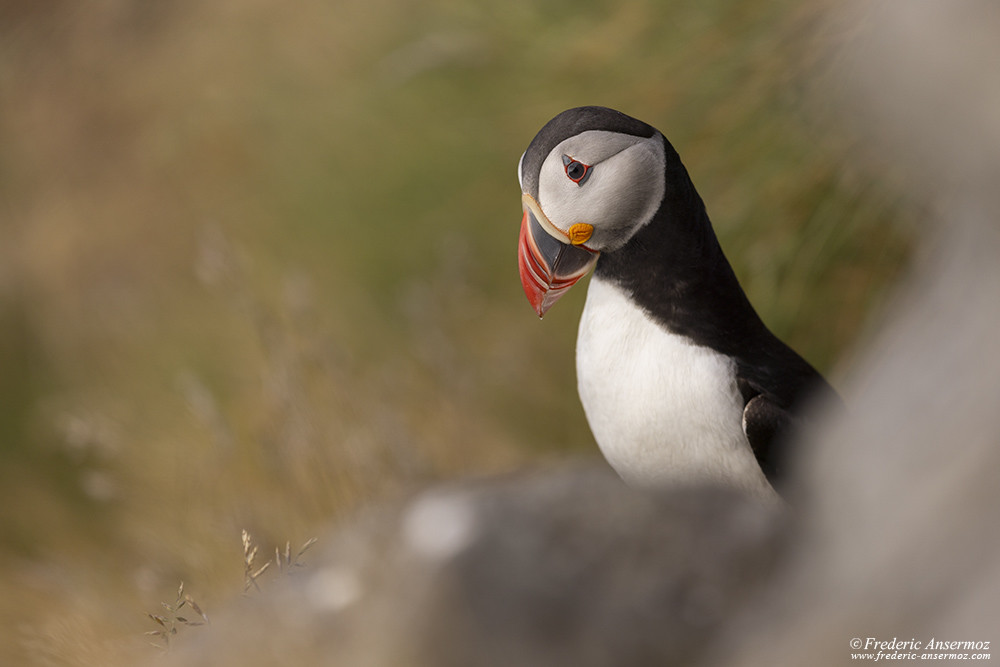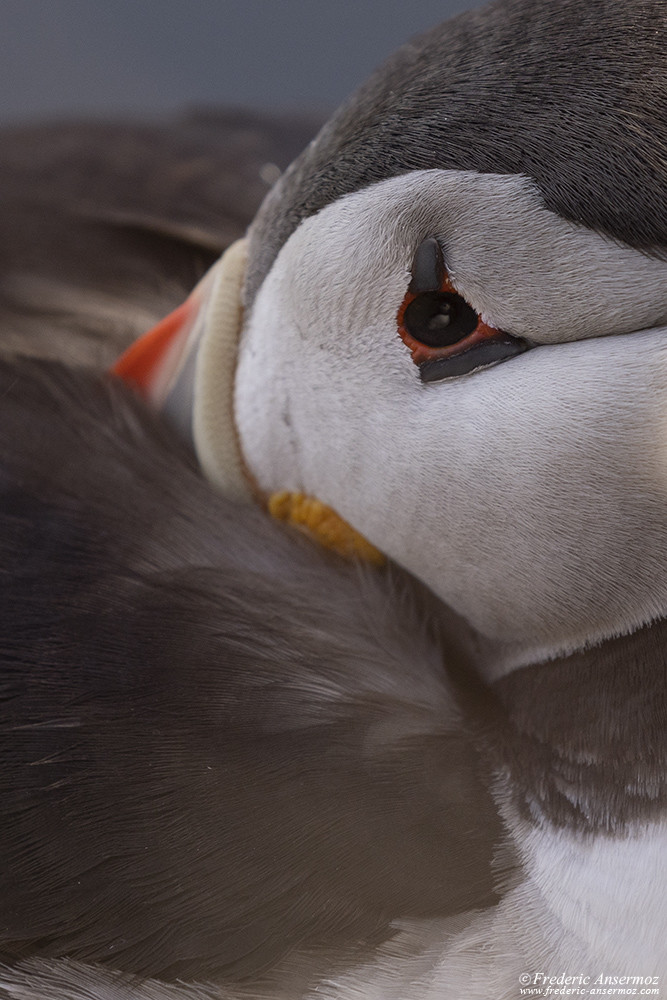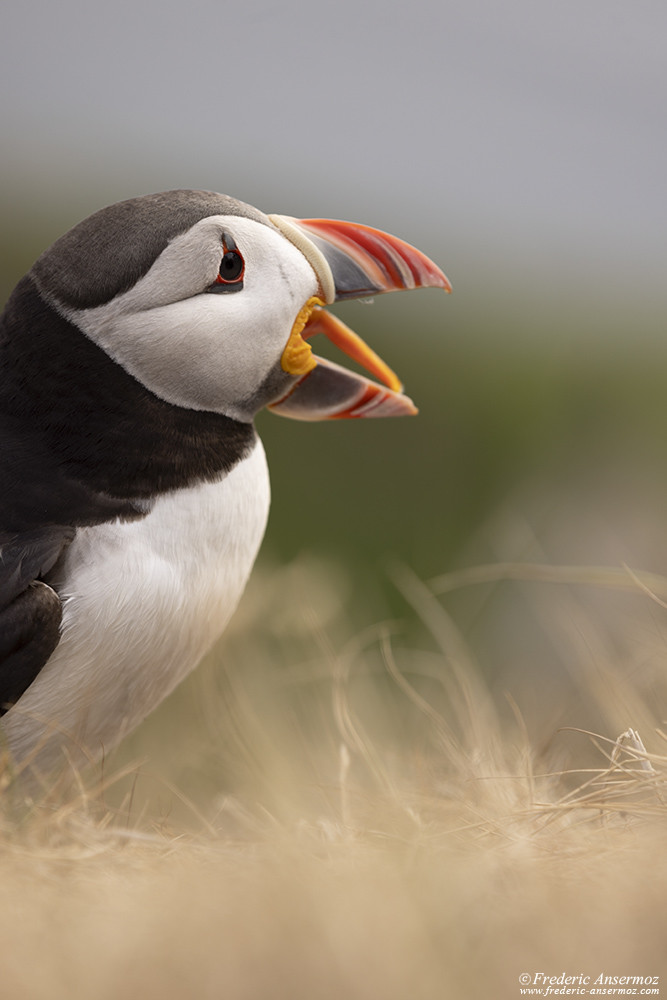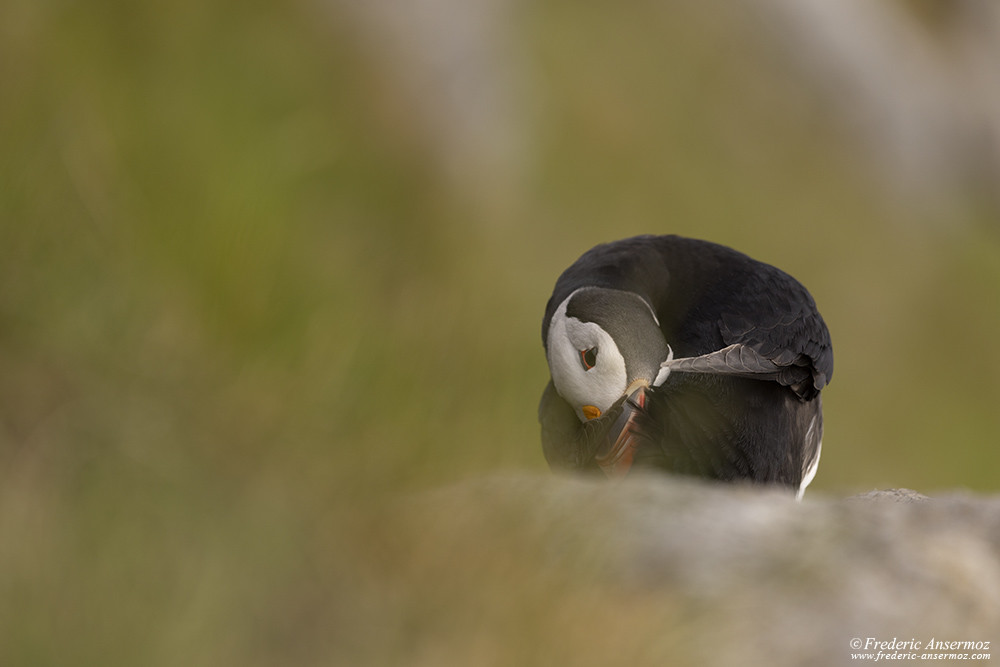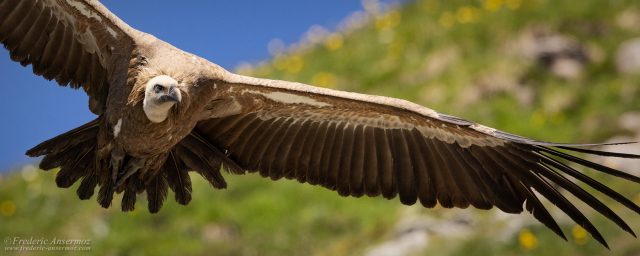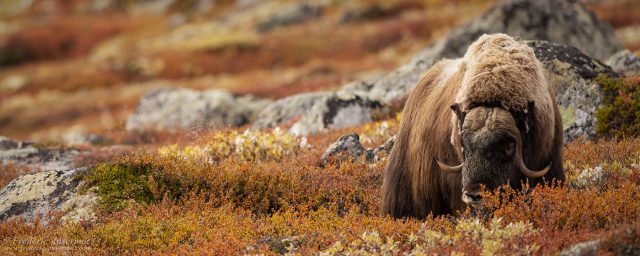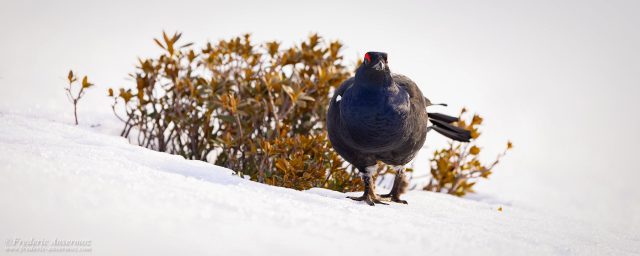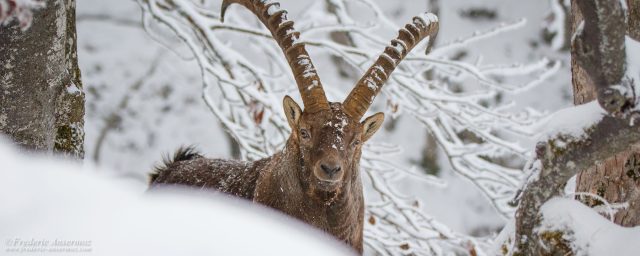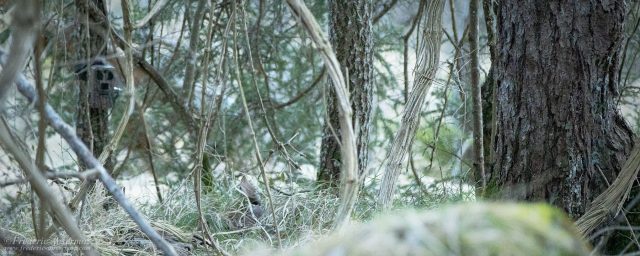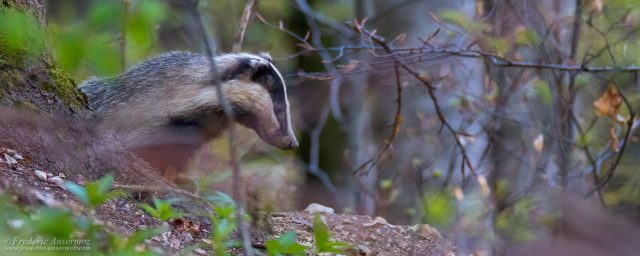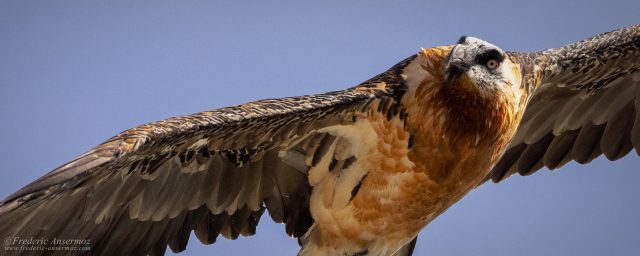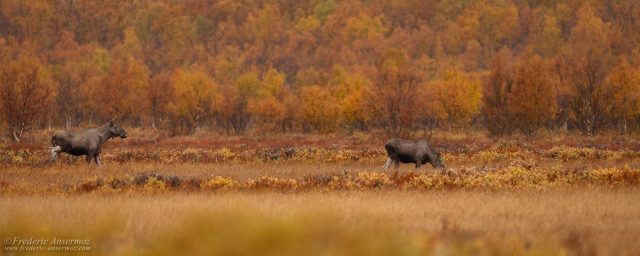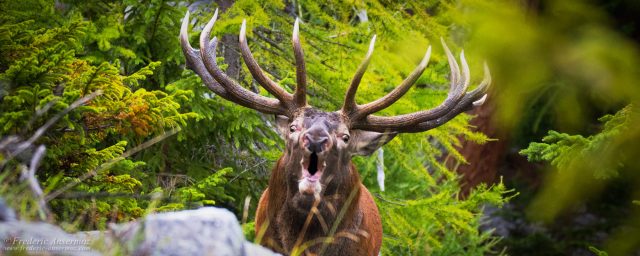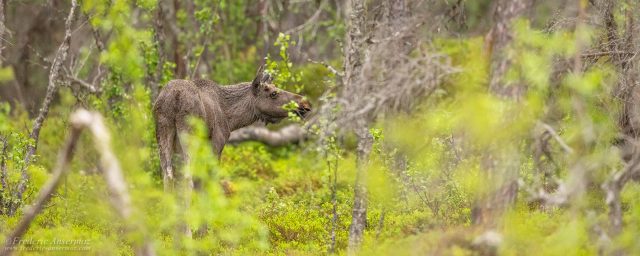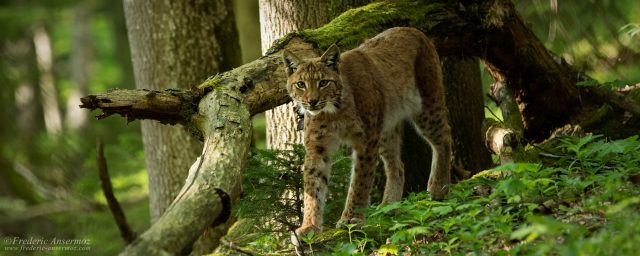One of the best places to see Puffins in Norway, Runde Island is a top destination for those wanting to see these sea birds up close.
The island is located just outside of Norway’s north-western coast, and there is a road leading there thanks to a bridge. Making the location very accessible, for the best, and also the worst.
If you are wondering when is the best time to see Puffins in Norway, the ideal time for birdwatching there is between late June and August.
The bird cliffs are full of life, which is great for birdwatching in Norway.
Be quiet and enjoy this beautiful spectacle of mother nature!
The puffin species you can photograph in Norway, on Runde Island, is the Atlantic Puffin. Living up to 30-40 years and known as being monogamous, this cute sea bird is one of species you can also encounter on Runde Island :
Northern Gannets (Norway’s largest colony), Northern Fulmar, Kittiwake, Great Skua, European Shag, Razorbill, Common Guillemot, Ring Ouzel, Northern Wheatear, White-Tailed eagles, etc.
The number of breeding pairs of the Atlantic Puffin is estimated at 100,000.
The puffins build their nests in small tunnels that they dig out themselves. In the soil, small cavities, in rock cracks, the baby puffins make sounds like… a hungry stomac ^^.
In May-June, the female puffin lays only one egg, which is breeded by both parents. After 40–45 days, the baby puffins hatches and remains in the nest until it is fully capable of flying, and independent of its parents, usually after 5-7 weeks (depending on the food supply).
Puffins usually spend the day at sea, returning to their nests in the evening, around 18-20 (6-8 pm), to feed their young. So you will probably read on blogs about Puffins in Norway, especially on Runde Island, that dusk is the perfect time for observation as birds are most active.
You will still have lots of light to photograph the puffins, as dark almost never comes during the Nordic summers.
Honestly, it’s true, and the colors provided by the sunset, are amazing. But it’s also the moment where most people are gathering, more or less respectfully, to watch the puffins.
I’m saying that because I’ve seen people trying to touch the birds, sitting in front of the nest entrance, preventing adult puffins from feeding their offspring… and laughing at the parents waiting with their fishes still in their beak.
That’s the time I left, and loose a bit more faith in Humanity.
Go early (I went there around 4pm), find a place to sit and hold on to it. Some people arriving really late, won’t hesitate to try to walk over you. Make them to understand that they won’t :)
So I advise you to go in the morning, there is almost no one there, and the puffins are also active.
You will hear the ocean, perhaps the wind and thousands of birds, while enjoying the view.
Two tips for Photographing Puffins in Norway
Understand their behavior: By simply observing and understanding their patterns you can predict where they are going to be or land.
Use a Zoom Lens: Useful for birds in flight, it also allows you to keep a safe distance without disturbing the birds while getting a clear shot.
Despite some people behavior, I enjoyed to photograph puffins on Runde Island during my a road trip in Norway.
It was the first time for me to watch these cute sea birds, and seeing them really close was an amazing experience.
The impressive cliffs and the breathtaking landscape in general, make Runde an incredible destination for any birdwatcher or nature enthusiast.
During your visit to Runde, parts of your hike will be close to the edge of very tall cliffs. Marked paths will guide you around the island, so please, stay on them and respect the birds.
With four bird sanctuaries and one nature reserve, these parts of the island are for the birds only.
If you are visiting Norway, you can also plan a trip to see the musk ox in Dovrefjell

